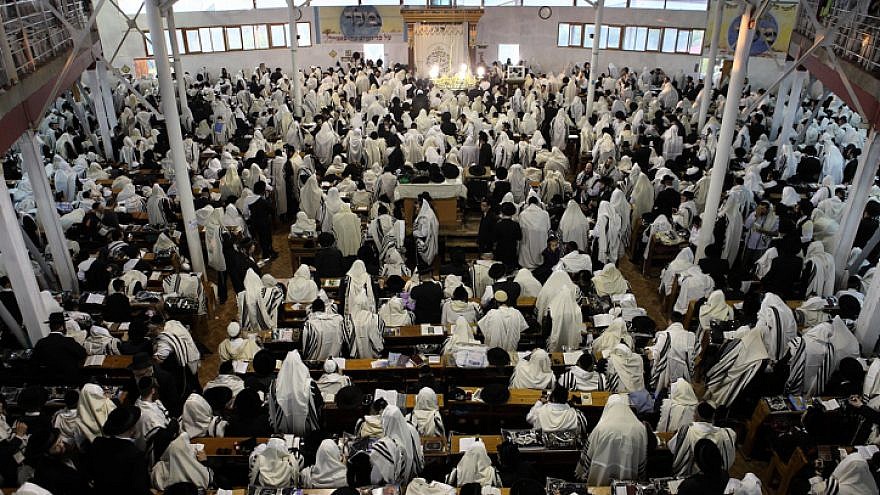Tens of thousands of Jews from around the world have arrived in Uman, Ukraine, to spend Rosh Hashanah near the tomb of spiritual leader Rabbi Nachman of Breslov. The two-day holiday begins on the evening of Sept. 29 and ends after sundown on Oct. 1.
The mass pilgrimage is an annual tradition that began after the rabbi’s death and burial in 1810.
Following a fire that destroyed his home in Bratslav (60 miles west of Uman), the 38-year old rabbi moved to Uman for the last year of his life, invited by a Jewish community there who provided him with housing and care as he suffered from tuberculosis. As many made the journey to hear the rabbi’s sermons on the major Jewish holidays, and as his illness progressed, Rabbi Nachman asked his followers that year to be with him for Rosh Hashanah in particular.
Following the rabbi’s death just weeks Rosh Hashanah, an annual pilgrimage was instituted to his gravesite every Rosh Hashanah, which continued even during Communist rule.
Each Rosh Hashanah, the number of visitors to the gravesite increases, with various Jewish organizations coming together to provide meals and medical care for the visitors. This year, organizers expect more than 50,000 visitors.
According to the National Police of Ukraine’s press service, in light of the massive pilgrimage, several dozen Israeli police officers will be helping Ukrainian law enforcement to keep order during the holiday.
Ahead of the holiday, Israel’s Foreign Ministry organized a meeting of the major organizations involved in running and securing the event, including Israeli Ambassador to the Ukraine Joel Lion, a representative of Israel’s police force, local health agencies and law enforcement, and chief operations director for United Hatzalah David Krispel.
According to United Hatzalah, the organizations presented a summary of the previous year’s operation and this year’s operational plan for the health management of the pilgrimage.
Included in the plan was the oversight and operation of the local medical clinic operated and run by United Hatzalah volunteers, as well as how the organization plans to equip and dispatch volunteer first responders and ambulance teams throughout the town over the holiday.
“Working here with 50,000 to 70,000 people—seeing them pray, dance and being happy—is so exciting,” said United Hatzalah EMT and full-time logistics coordinator Moshe Feuer. “There is an amazing feeling in the air [centered around] Rabbi Nachman,” he told JNS.
Originally from New York, this is Feuer’s sixth time in Uman for Rosh Hashanah and second time working as an EMT during the mass pilgrimage. Compared to other holidays in which he goes to Uman, such as Sukkot, Feuer posed that Rosh Hashanah is “amazing” and markedly different, with “the music, the thousands and thousands of people in the cold weather, everybody dancing, singing and working together.”
Providing health care to the tens of thousands of people is the biggest challenge of Rosh Hashanah in Uman, said Feuer.
Among the medical volunteers in Uman are non-Jewish Israeli Arab medics who, in addition to their life-saving efforts, will perform tasks during the holiday to provide comfort and care at the medical clinic operated by Oxford Medical and United Hatzalah.
In addition to the 85 Israeli volunteers that United Hatzalah brings, said Feuer, he was tasked this year with arranging an American unit of 35 medics, EMTs and paramedics who came from abroad, supplying them with medical equipment bags, radios and vests to provide medical care to those in Uman for the holiday.


























